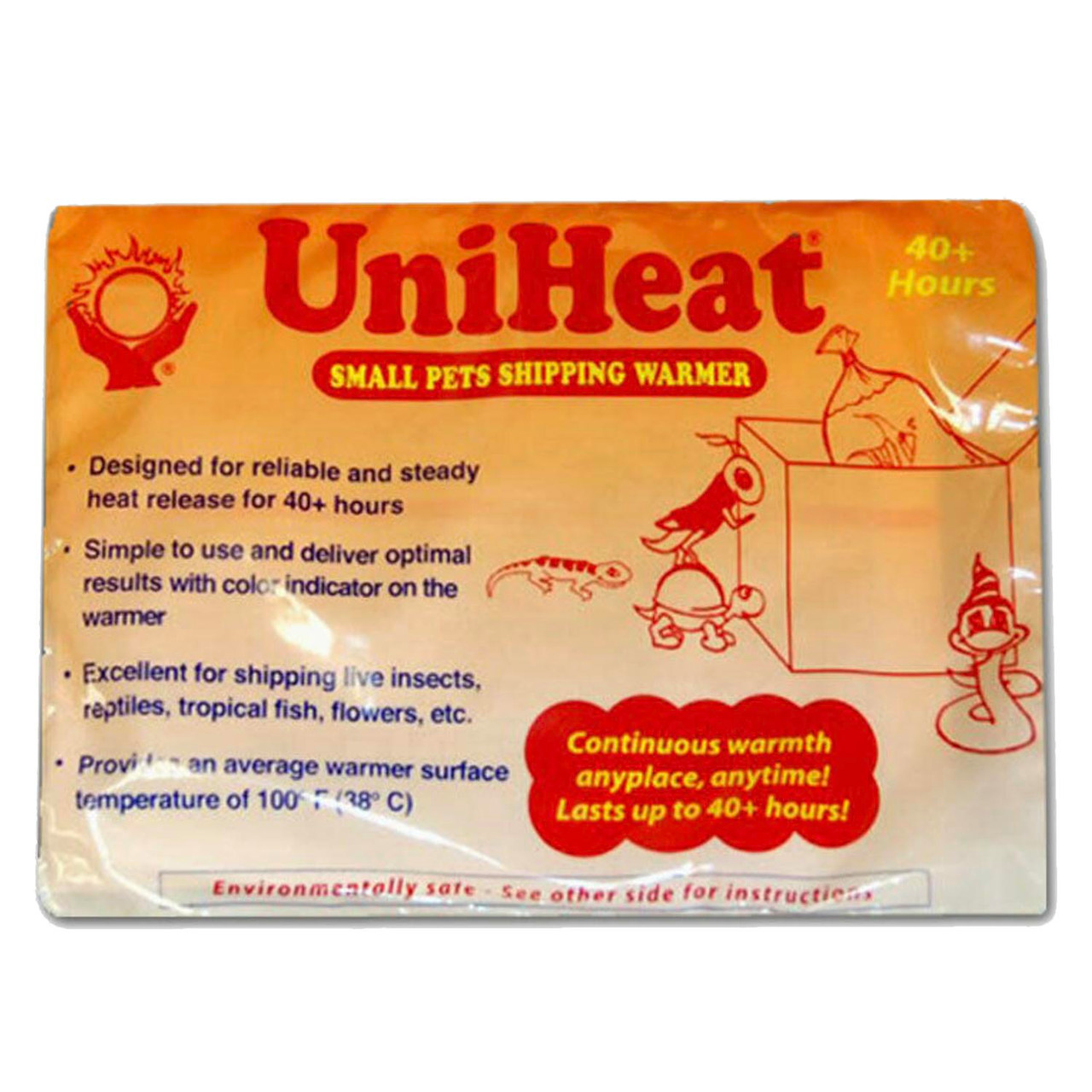Posted by UniHeatPacks on 29th Aug 2025
Understanding Heat Pack Activation Times & Insulation Techniques
Understanding Heat Pack Activation Times & Insulation Techniques
Whether shipping reptiles, tropical plants, or perishable goods, the right use of heat packs can make the difference between safe arrival and shipping stress. Understanding how UniHeat packs activate—and pairing them with proper insulation—ensures stable temperatures during transit.
How UniHeat Packs Activate
UniHeat warmers are air-activated. Once removed from their packaging, the iron powder inside reacts with oxygen, producing heat through oxidation. This controlled reaction allows the pack to deliver steady warmth for the rated duration (e.g., 40hr, 72hr, 96hr).
- Activation time: Allow 30–45 minutes for packs to reach full heat before placing in shipping boxes.
- Airflow balance: Heat packs need moderate air exchange. Too much airflow = overheating; too little = suffocation of the reaction.
- Placement tip: Wrap packs in paper or tape them to the box lid to prevent direct contact with animals, leaves, or perishables.
Choosing the Right Heat Pack Duration
Each shipment has unique transit times and temperature exposures. Matching the correct pack length is crucial:
Insulation Techniques That Work
Even the best heat pack can’t perform properly without insulation. Insulation regulates airflow, retains warmth, and prevents spikes in temperature.
- Styrofoam liners: Provide consistent insulation; standard for reptile and plant shippers.
- Corrugated cardboard + filler: For shorter trips, layered cardboard with crumpled paper creates a cushion and heat buffer.
- Vent holes: Add 1–2 small holes to ensure oxygen flow. Test to avoid overexposure.
- Buffering layers: Always place newspaper or kraft paper between the pack and cargo for safety.
Best Practices for Shipping
- Pre-warm the pack: Activate 30–45 minutes before packing.
- Test with dummy shipments: Run trial boxes with thermometers in expected weather conditions.
- Adjust per season: In winter, use thicker insulation + larger packs; in milder weather, smaller packs or less insulation may be sufficient.
- Monitor feedback: Ask recipients to report arrival temperature; adjust packing SOPs accordingly.
Need Reliable Heat Packs?
UniHeat packs are trusted worldwide for reptile, plant, and perishable shipping. Choose from 40hr, 72hr, or 96hr durations—or try the sampler bundle to test them all.
Frequently Asked Questions
How long does it take a UniHeat pack to fully activate?
Typically 30–45 minutes. Always let the pack warm up before sealing in a box to avoid underperformance.
Can I tape the heat pack directly inside the box?
Yes, but always buffer with paper or tape to the lid to prevent direct contact with animals, plants, or perishables.
Do heat packs need oxygen?
Yes. Small vent holes or breathable cardboard allow oxygen flow to sustain the chemical reaction.
What’s the difference between 40hr, 72hr, and 96hr packs?
Duration. Choose based on expected transit time—short-haul (40hr), standard 2–3 day shipping (72hr), or extended/cold-weather shipments (96hr).
Can I use multiple heat packs in one box?
Yes, but test configurations. Too many can overheat the shipment, especially in small insulated boxes.





